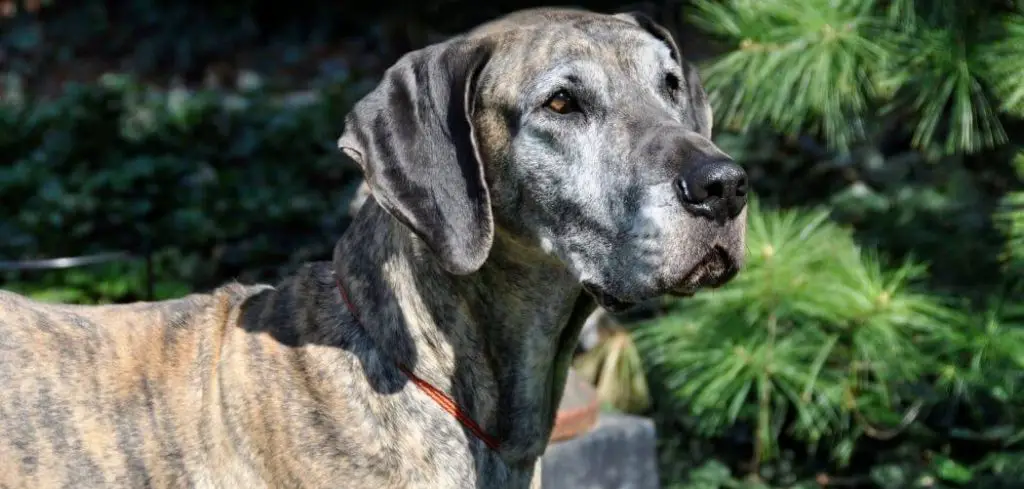When your dog starts whining constantly and refuses to eat, it can feel like something is seriously wrong. These two symptoms combined can signal anything from discomfort to illness, and it’s essential to figure out the cause quickly.
We outline the common reasons why your dog keeps whining and not eating, what you can do at home, and when to seek veterinary help.
Dog Keeps Whining and Not Eating — Why It Happens
A dog that is whining and not eating is often trying to communicate pain, anxiety, digestive upset, or a more serious internal issue. It might be due to conditions such as gastrointestinal discomfort, pancreatitis, dental pain, or anxiety-related problems.
Sometimes, this behavior stems from emotional stress or a sudden change in routine.
In older dogs, joint pain or organ dysfunction may be the root cause. Regardless of the age, it’s important not to dismiss this combination of symptoms.

Common Causes of Dog Keeps Whining and Not Eating
Gastrointestinal Upset
Digestive issues are among the most common causes of a dog refusing food and whining.
If your dog’s stomach is upset—due to something they ate, a virus, or inflammation—they may experience nausea, abdominal cramps, or bloating.
These symptoms make eating uncomfortable.
Whining often accompanies nausea or cramping as your dog attempts to communicate distress. You may also notice signs like licking lips, drooling, or trying to eat grass.
Mild stomach upsets may pass on their own, but persistent symptoms should be evaluated by a vet.
Pain or Injury
Dogs who are experiencing pain, whether from a muscle strain, joint issue, or internal condition, often express it by whining.
If eating worsens the discomfort—like in cases of neck pain (from bending down to the bowl) or oral pain—they may avoid food altogether.
Pay close attention to signs like limping, yelping when touched, or difficulty lying down.
Even subtle changes in posture or movement can be revealing.
Undiagnosed pain can quickly worsen if ignored.
Read more: Dog Keeps Throwing Up Water and Not Eating (Is it an emergency?)
Dental Disease
Mouth pain is a frequent but under-recognized cause of a dog not eating and whining.
Dogs suffering from broken teeth, infected gums, or oral tumors may try to eat but stop after a few bites, then whine in frustration or pain.
Check your dog’s mouth if possible—look for red gums, visible tartar, or foul-smelling breath.
Even without obvious signs, dental disease could still be to blame.
This issue requires veterinary treatment and likely dental cleaning or tooth extraction.
Anxiety or Stress
Changes in your dog’s environment—like a new pet, moving, loud noises, or being left alone—can result in stress-induced whining and a loss of appetite.
Sensitive or anxious dogs are particularly prone to this.
Unlike physical illness, stress-related whining may be more frequent at night or when routines change.
Appetite can return once the source of anxiety is removed or managed, but chronic anxiety may require professional help or calming supplements.
Pancreatitis
Pancreatitis (inflammation of the pancreas) causes significant abdominal pain, nausea, and vomiting. It’s commonly triggered by eating rich or fatty foods.
Affected dogs will typically stop eating, vomit, and whine due to internal discomfort.
This condition is serious and needs urgent care.
Symptoms also include a hunched posture, lethargy, diarrhea, and bloated abdomen. Dogs may also be sensitive to touch near their belly.
Bloat (Gastric Dilatation-Volvulus)
Though rare, bloat is a life-threatening condition that causes the stomach to fill with gas and twist.
Dogs with bloat often whine in distress, retch without producing vomit, and avoid food.
Look for signs like a swollen belly, pacing, drooling, and collapse. This is an emergency—seek veterinary care immediately.
What to Do If Your Dog Is Whining and Not Eating
Start by observing your dog’s behavior and any additional symptoms. Check their mouth for signs of dental pain.
Try offering a bland diet like boiled chicken and rice to see if appetite returns. Avoid forcing food, as it could worsen nausea.
Create a calm, quiet environment and ensure your dog has access to fresh water.
If anxiety is suspected, keep your dog close and avoid leaving them alone for long periods. Watch for signs of improvement over the next 12–24 hours.
If your dog begins eating again and the whining stops, it may have been a mild, self-limiting issue.
However, persistent symptoms always warrant professional attention.
When to Call or Visit Your Vet
If your dog refuses food for more than 24 hours and continues to whine, it’s time to consult your vet.
Whining combined with vomiting, diarrhea, bloated belly, fever, limping, or lethargy suggests a more serious issue.
Any sudden behavior change should be treated seriously, especially in puppies or senior dogs.
Call your vet immediately if you suspect bloat, pancreatitis, poisoning, or severe dental pain.
Quick treatment can prevent complications.
Read more: Dog Diarrhea and Not Eating (Causes and when to worry)
Key Takeaway
When your dog keeps whining and not eating, it’s often their way of asking for help.
Whether due to pain, digestive upset, or emotional stress, this combination of symptoms should never be ignored.
Monitor your dog closely and don’t hesitate to contact your veterinarian if the symptoms persist or worsen. Acting early gives your dog the best chance at a full, healthy recovery.
